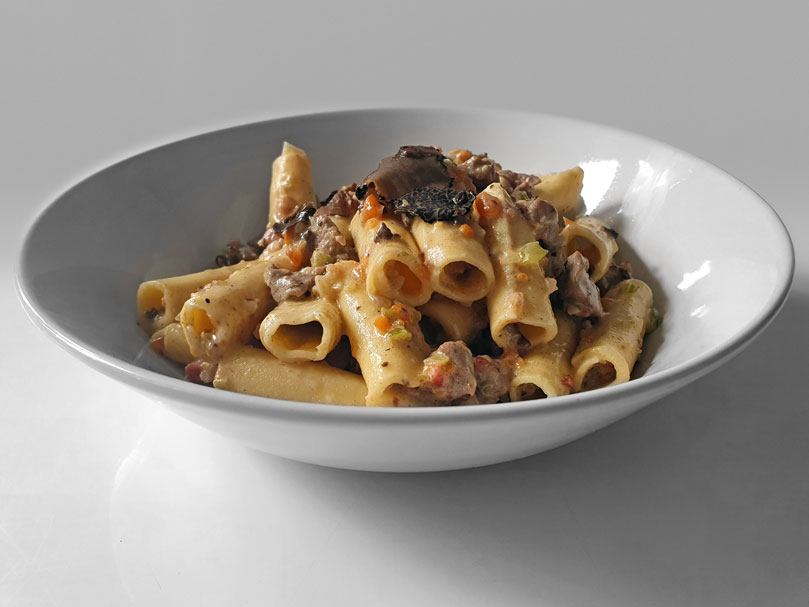
Pellegrino Artusi was an Italian businessman, author and food connoisseur. He should serve as an inspiration to anyone who has done nothing useful with their life. It’s never too late! In 1881, and at the ripe old age of 71, he released his masterpiece:

Jeff from Byker Grove. Scrubs up nicely.
His timing was impeccable as the Kingdom of Italy had only formed two decades earlier. A single country could now unite in its hatred of all other parts of the country. The citizens of the new Italy needed a reference to all the other regional cuisines they would never consider eating. Artusi’s book gave them exactly that, and is arguably the first ever Italian cookbook. Rather than focussing on a single region the book covers dishes from across Italy.
It has been a hugely influential cookbook, being reprinted through 13 editions, but the reason it is important to us is that it shows the first printed record of pasta with a sauce referred to as “alla bolognese”. Artusi spent a lot of time in Bologna, so would not only have known the dish as he presents it, but also its many variants.
Here is Artusi’s bolognese in full:
87. MACCHERONI ALLA BOLOGNESE
I Bolognesi, per questa minestra, fanno uso dei così detti denti di cavallo di mezzana grandezza, e questa pare anche a me la forma che meglio si presta, se cucinati in tal modo; avvertite però che siano di sfoglia alquanto grossa, onde nel bollire non si schiaccino; al qual difetto poco si bada in Toscana ove per la predilezione che sempre si dà ai cibi leggeri vengono fabbricate certe qualità di paste così dette gentili, a buco largo e a pareti tanto sottili che non reggono punto alla cottura e si schiacciano bollendo, il che fa disgusto a vederle non che a mangiarle.
Come ognuno sa, le migliori paste da minestra sono quelle di grano duro, che si fanno distinguere pel colore naturale di cera. Diffidate di quelle gialle, di cui si tenta mascherare l’origine ordinaria di grano comune, per mezzo di una tinta artificiale, che una volta era data almeno con sostanze innocue, quali lo zafferano o il croco.
Le seguenti proporzioni sono approssimative per condire grammi 500 e più di minestra:
- Carne magra di vitella (meglio se nel filetto), gr. 150.
- Carnesecca, grammi 50.
- Burro, grammi 40.
- Un quarto di una cipolla comune.
- Una mezza carota.
- Due costole di sedano bianco lunghe un palmo, oppure l’odore del sedano verde.
- Un pizzico di farina, ma scarso assai.
- Un pentolino di brodo.
- Sale pochissimo o punto, a motivo della carnesecca e del brodo che sono saporiti.
- Pepe e, a chi piace, l’odore della noce moscata.
Tagliate la carne a piccoli dadi, tritate fine colla lunetta la carnesecca, la cipolla e gli odori, poi mettete al fuoco ogni cosa insieme, compreso il burro, e quando la carne avrà preso colore aggiungete il pizzico della farina, bagnando col brodo fino a cottura intera.
Scolate bene i maccheroni dall’acqua e conditeli col parmigiano e con questo intingolo, il quale si può rendere anche più grato o con dei pezzetti di funghi secchi o con qualche fettina di tartufi, o con un fegatino cotto fra la carne e tagliato a pezzetti; unite, infine, quando è fatto l’intingolo, se volete renderli anche più delicati, mezzo bicchiere di panna; in ogni modo è bene che i maccheroni vengano in tavola non asciutti arrabbiati, ma diguazzanti in un poco di sugo.
Trattandosi di paste asciutte, qui viene a proposito una osservazione, e cioè che queste minestre è bene cuocerle poco; ma badiamo, modus in rebus. Se le paste si sentono durettine, riescono più grate al gusto e si digeriscono meglio. Sembra questo un paradosso, ma pure è così, perché la minestra troppo cotta, masticandosi poco, scende compatta a pesar sullo stomaco e vi fa palla, mentre se ha bisogno di essere triturata, la masticazione produce saliva e questa contiene un fermento detto ptialina che serve a convertire l’amido o la fecola in zucchero ed in destrina. L’azione fisiologica della saliva è poi importantissima giacché oltre all’effetto di ammollire e di sciogliere i cibi, facilitandone l’inghiottimento, promuove per la sua natura alcalina la secrezione del succo gastrico allorché i cibi scendono nello stomaco. Per questa ragione le bambinaie usano a fin di bene un atto schifoso come quello di fare i bocconi e masticare la pappa ai bambini. Si dice che i Napoletani, gran mangiatori di paste asciutte, vi bevano sopra un bicchier d’acqua per digerirle meglio. Io non so se l’acqua, in questo caso, agisca come dissolvente o piuttosto sia utile perché, prendendo il posto di un bicchier di vino o di altro alimento, faccia, naturalmente, rimaner lo stomaco più leggero.
I denti di cavallo, quando sono più grossi e più lunghi, si chiamano in Toscana cannelloni e in altri luoghi d’Italia buconotti o strozzapreti.
87. MACARONI BOLOGNESE
When preparing the bolognese, use the so-called “half-sized horse teeth” (“denti di cavallo di mezzana”) pasta as this seems to me to be the shape that best suits it. If cooking this way be warned, however, to use a somewhat thick pasta dough so that the horse’s teeth do not collapse when boiling; little attention is paid to this advice in Tuscany, where the preference is always to prepare delicate and light pastas, with a large hole and with walls so thin that they do not stand up to cooking, and will disintegrate in boiling water. My disgust at seeing the pasta is only matched by my disgust at seeing them being eaten.
As everyone knows, the best pastas are those made from durum wheat, which are distinguished by the natural color of wax. Be wary of the overly yellow ones, whose origin of ordinary, common wheat is attempted to be masked by means of an artificial colouring - I’ve seen it prepared, thankfully with harmless substances such as saffron or crocus.
The following proportions are approximate for 500 grams or more of sauce for pasta:
- Lean veal meat (preferably fillet), gr. 150.
- Carnesecca [pancetta], 50 grams.
- Butter, 40 grams.
- A quarter of a common onion.
- Half a carrot.
- Two ribs of white celery, one palm long (or the bouquet of green celery).
- A pinch of flour, but scarcely much.
- A small pot of broth.
- Very little salt (or none, because the carnesecca and the broth are already well seasoned).
- Pepper and, to those who like it, a pinch of nutmeg.
Dice the meat into small cubes, finely chop the carnesecca, onion and herbs with the mezzaluna, then put everything together, including the butter, and when the meat has browned add a pinch of flour, wetting with broth until completely cooked.
Remove the macaroni from the water and drain well. Season with the parmesan and the bolognese sauce, which can be made even more delicious with pieces of dried mushrooms or with a few slices of truffles, or even with a liver cooked with the meat and cut into small pieces.
Finally, when the sauce is made, if you want to make them even more delicate, add half a glass of cream; in any case it is good that the macaroni comes to the table not dry, but dribbling in a little sauce.
Since we are discussing dry pasta, here is an observation, namely that these pastas should be cooked only a little, but watch out - everything in moderation. If the pasta feels “durettine”, they are tastier and will digest better. This seems counterintuitive, however with overcooked pasta you are chewing very little and the food comes down compacted and weighs on the stomach, while if your food needs to be chewed, you will produce more saliva and this releases a fermentor called “ptialina”, which is used to convert starch into sugar and dextrin. The psychological action of producing saliva is also very important since in addition to the effect of softening and dissolving foods, facilitating their swallowing, it promotes by its alkaline nature the secretion of gastric juice when the foods get into the stomach. For this reason, nannies do babies no favours by chewing their foods first. It is said that the Neapolitans, great eaters of pasta, drink a glass of water with it to aid digestion. I do not know if the water acts as a dissolvent or is rather useful because, taking the place of a glass of wine or other beverage, it naturally makes the stomach remain lighter.
When “horse’s teeth” pasta are bigger and longer, they are called cannelloni in Tuscany and bocconotti or strozzapreti in other parts of Italy.
This recipe is typical of Artusi’s writing style. His opinions about saliva and converting starch into sugar and dextrin would have been at the cutting edge of food science of the time. He also fills the pages with anecdotes and irrelevant chit chat about the people he’s met on his travels.
If Heston Blumenthal wrote a food blog it might not look too different to this.
So let’s get stuck into his instruction and recreate bolognese’s baptism.
Il Carne
- Carne magra di vitella (meglio se nel filetto), gr. 150.
- Carnesecca, grammi 50.
- Lean veal meat (preferably fillet), gr. 150.
- Carnesecca [pancetta], 50 grams.
Artusi knows what he wants. Our other bolognese recipes have rather apologetically presented a selection of meats and asked us to do what we think is best. Artusi goes straight for veal and he likes it lean. We’re instructed to get the good stuff if we can, with filet being the order of the day.
Veal production has had a bad rap over the years. Strictly speaking, veal is meat from any calf, but in practice we’re normally only talking about the meat from male dairy calves.
When a new litter is born, the girls are kept for their ability to produce milk. Anyone who has tried to milk a bull will tell you it’s not the right tool for the job, and so the males are destined for a short life. Back in the olden days (and still currently in the US) this meant keeping the calves in veal crates. These crates are basically very small boxes which can just about hold a calf, and normally have a neck tie which prevents the calf from moving. They’re fed a diet of milk or milk formula, and the combination of not being able to move and not having much intake of iron results in a very pale and extremely tender meat.
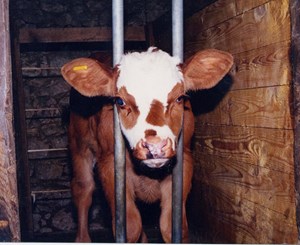
Veal crates were banned in Europe over a decade ago, but the practice of under-nourishment through predominantly milk based diets continues in France, Italy and the Netherlands, where “white veal” makes its way into supermarkets.
White veal is from calves under eight months old. In the UK, we opted out of these practices considered cruel some time back, but the antidote wasn’t much better for the young males. Instead of a short miserable life, our male dairy calves are shot in the back of their heads within hours of birth.
This continues to be a widespread practice, but you can buy veal in the UK which has had as good a life as a male dairy calf can expect.
Our supermarket veal is “rose veal” which gets its name from the pinkish-red colour of the meat. It’s also not technically veal as the calves have grown into adolescence making rose veal “young beef”.
Artusi would have been referring to the milk fed, white veal in his recipe, but I’m going to show some solidarity to my bovine brothers and continue with a fillet of rose veal ✌. “Diced into small cubes” stops us short of mincing.
Once more, cured pork makes the menu. Artusi refers to this as carnesecca which is the equivalent of the pancetta we already know and love.
Pancetta has proven to be a loyal and more than competent bolognese supporting actor. Our rock. As important to a ragù as the pasta it dresses. We know this is going to be exceptional as we are again asked to give it the mezzaluna treatment.
And finally, amongst the optional ingredients we have chicken livers. This is admittedly not the most appealing offer to the modern English palate.
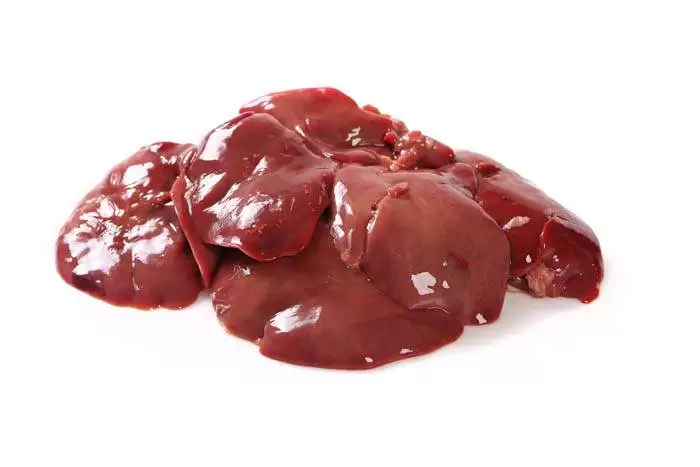
A walk down the meat aisle at your local supermarket confirms that chicken breast reigns supreme. To many, drumsticks and wings might make an appearance at a BBQ and thighs are unfairly met with suspicion, but the livers are left for old people and perverts. Their popularity is reflected in their price tag. At £3 a killo it has to be the cheapest way to consume protein from an animal.
So it might be easier to steer my British audience away from this optional extra. However, when we’re about to build a bolognese from veal filet - one of the most delicate meats out there - I think we’re going to need some additional flavour.
Compared to other livers, those that come from a chicken are relatively mild. They taste a little like the redder meats of a chicken’s leg but with an added gaminess and a metallic bloodiness. I’m expecting this to provide a nice balance to the rest of the meat and so I’ll be taking Artusi up on his offer.
Il Sugo
The non-meat items in this sauce read a little like the manuscript to Fast & Furious 8. At this stage, it’s a little formulaic and predictable.
- Burro, grammi 40.
- Un quarto di una cipolla comune.
- Una mezza carota.
- Due costole di sedano bianco lunghe un palmo, oppure l’odore del sedano verde.
- Un pizzico di farina, ma scarso assai.
- Un pentolino di brodo.
- Sale pochissimo o punto, a motivo della carnesecca e del brodo che sono saporiti.
- Pepe e, a chi piace, l’odore della noce moscata.
- Butter, 40 grams.
- A quarter of a common onion.
- Half a carrot.
- Two ribs of white celery, one palm long (or the bouquet of green celery).
- A pinch of flour, but scarcely much.
- A small pot of broth.
- Very little salt (or none, because the carnesecca and the broth are already well seasoned).
- Pepper and, to those who like it, a pinch of nutmeg.
Having seen a soffritto generally delivered with equal measures of onion, carrot and celery, this one looks to be a bit celery heavy. I can’t imagine this will matter too much but could result in a slightly more herby tang.
Real herbs have been absent from our bolognese’s since our initial spag bol outing, the Italian’s have remained adamant over the centuries that herbs have no place in a bolognese.
I’m glad to see broth back on the list in small measures. Alvisi’s ragù almost sent me to brodo bankruptcy. The request for just a small pot means I can skip another half day of gentle simmering.
Beyond this I’m just seeing a lot of white noise.
After preparing my brodo with half a nutmeg and not realising any returns in flavour, I’m sceptical about what a pinch will do here. Maybe I just have a mild batch, but they haven’t delivered anything of note so far. I’m also glad to see the flour content is seriously curtailed since Alvisi’s wallpaper paste recipe. I’m expecting “a pinch, but scarcely much” will (thankfully) barely register.
I’m left with another slightly underwhelming mental image as I contemplate this sugo.
Artusi is careful with his words, at no point does he refer to this dish as a “ragù” - and for me it isn’t. I think the whole thing can be cooked up in less than 10 minutes on a high heat, and any longer on the stove is likely to lead to a worse outcome. It feels like this dish will be closer to a stir fry than the rich, meaty bolognese sauces to which I’ve become accustomed.
So, when Artusi reveals an optional half glass of cream from his inside pocket I’m quick to add this to my shopping list.
I Maccheroni
As we saw earlier, Alvisi seemed to have little in the way of opinion on the choice of maccheroni for his ragù. This is in stark contrast to l’Accademia - no pasta opinion was offered because tagliatelle was presupposed. Artusi, however, dedicates over half his words to a discussion of the best choice and preparation of maccheroni.
To me, this provides clues about the public’s perception of the pasta and sauce unions which would become so important to Italians. Artusi’s advice on choosing the “half horses teeth” hints that the audience isn’t used to hearing such tips.
The way he describes cooking his pasta also feels revelatory. “Durettine” is a word that must have fallen out of favour, as I can’t find it referenced in Italian-English dictionaries. It will have evolved from the Latin “durus”, meaning “hard” and points to an author desperately in search of a phrase everyone understands, like “al dente” - so powerful, it doesn’t need to be translated into other languages.
Artusi is scathing in his description of the Tuscan’s maccheroni, singling out the Neopolitans as the flag bearers for perfect pasta preparation.
As a gastronomic thought leader of the newly formed Kingdom of Italy, Artusi has inherited a country with only a patchy understanding of how to cook its most famous ingredient!
“Denti di cavallo” or “Horses teeth” sound more likely to come from ye olde English sweetie shoppe than pasta’s back catalogue, but it turns out these are totally legit in the modern market.
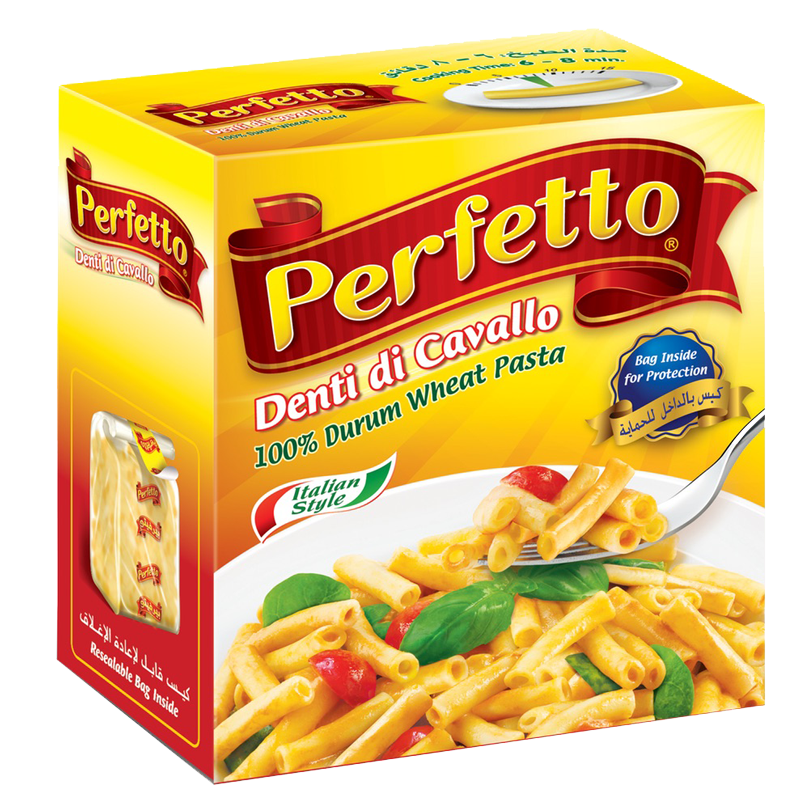
From this image, “horse’s teeth” look like a longer version of what we would today call “macaroni”.
That’s one funny looking horse!
The holes are small and when compared to the size of a fork, I would say a denti di cavallo is 5 cm long (or 2.5cm for the half).
Artusi points out that those incompetent Tuscans will try to make the hole in their pasta too large, and the outcome is a macharroni implosion under heat.
I’m going to struggle to replicate the exact dimensions of the perfect half horse’s teeth because I don’t have a pasta rolling stick thin enough for such a small hole. I’ll just need to make sure I stay on the right side of Artusi by thickening the walls of my teeth so that they stand up to the boiling.
One final word on pasta. Artusi may not believe we can emulate the Neapolitani with our pasta preparation, but he is confident we know good wheat when we see it. “As everyone knows” the wax colour pasta from durum wheat is better than all others for making pasta. “Everyone” clearly not extending to the Bologna Chamber of Commerce whose golden strand of tagliatelle is modeled on tipo 00 (fine white flour).
Durum wheat is hard (another name that derives from the latin “durus”) and contains more gluten than you get in white flour. With more gluten you can create a pasta dough which binds without the addition of eggs. The better varieties of supermarket dried pasta will be made from 100% durum wheat and water only. We would have struggled to create our recent pastas with tipo 00 flour and no eggs but would have a fighting chance with the yellow, more protein rich dough from durum.
There’s no recipe for Artusi’s pasta, but I’m going to assume those hapless Tuscans are creating their weak pasta dough from durum wheat flour and water only. I’m going to overlook this fact and stick with the formula that’s got us this far. 100g of flour and an egg for each serving, but this time using durum flour.
I ended up getting quite bamboozled when looking for durum flour.
Semolina is also milled from durum wheat and is supposed to provide a much coarser texture, almost like bread crumbs. You sometimes get it sprinkled on pizza bases. Durum flour shares the same origin but is milled much finer. Confusion arises as durum flour is often labelled semolina flour, as if the association with durum wheat is less important than the association with semolina. If the packaging has a picture of pasta, it’s probably the right stuff.
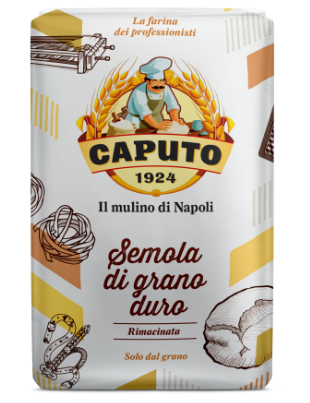
Il Tocco Finale
The dish comes together in classic Italian style, with pasta and sauce mixed together before being served. This appears to be one of the only constants for bolognese through the ages.
There is potentially a slight twist here though. Artusi recommends combining the pasta with parmesan and with our bolognese sauce. It’s possible something is lost in translation here, but when describing the preparation of a bolognese I would mix in the sauce first then sprinkle with parmesan and my advice would be the opposite, ie. combine the pasta with our bolognese sauce and then parmesan.
It might not be what Artusi has in mind, but I’m going to give this a go. Once the pasta is cooked and drained I’ll be mixing it first with parmesan, then with the sauce. It will be interesting to see if this makes a difference to the final flavour.
I will also be topping the finished dish with a few slices of truffle carpaccio. I’m not expecting this to provide a taste explosion, as with Alvisi’s dish, but it will add to the aesthetics.
Thank you Pellegrino Artusi for formally baptising our favourite dish! I look forward to tasting your little slice of history.

